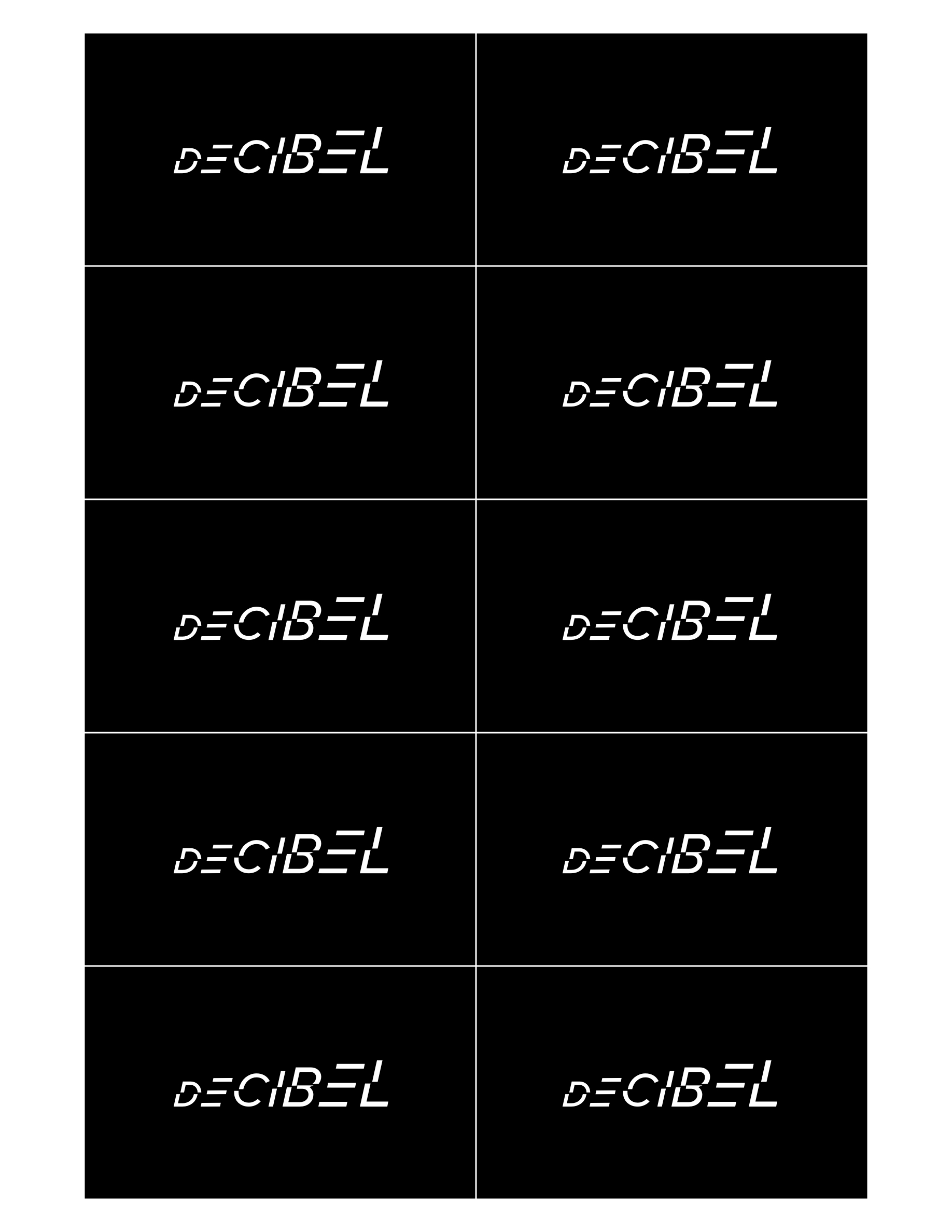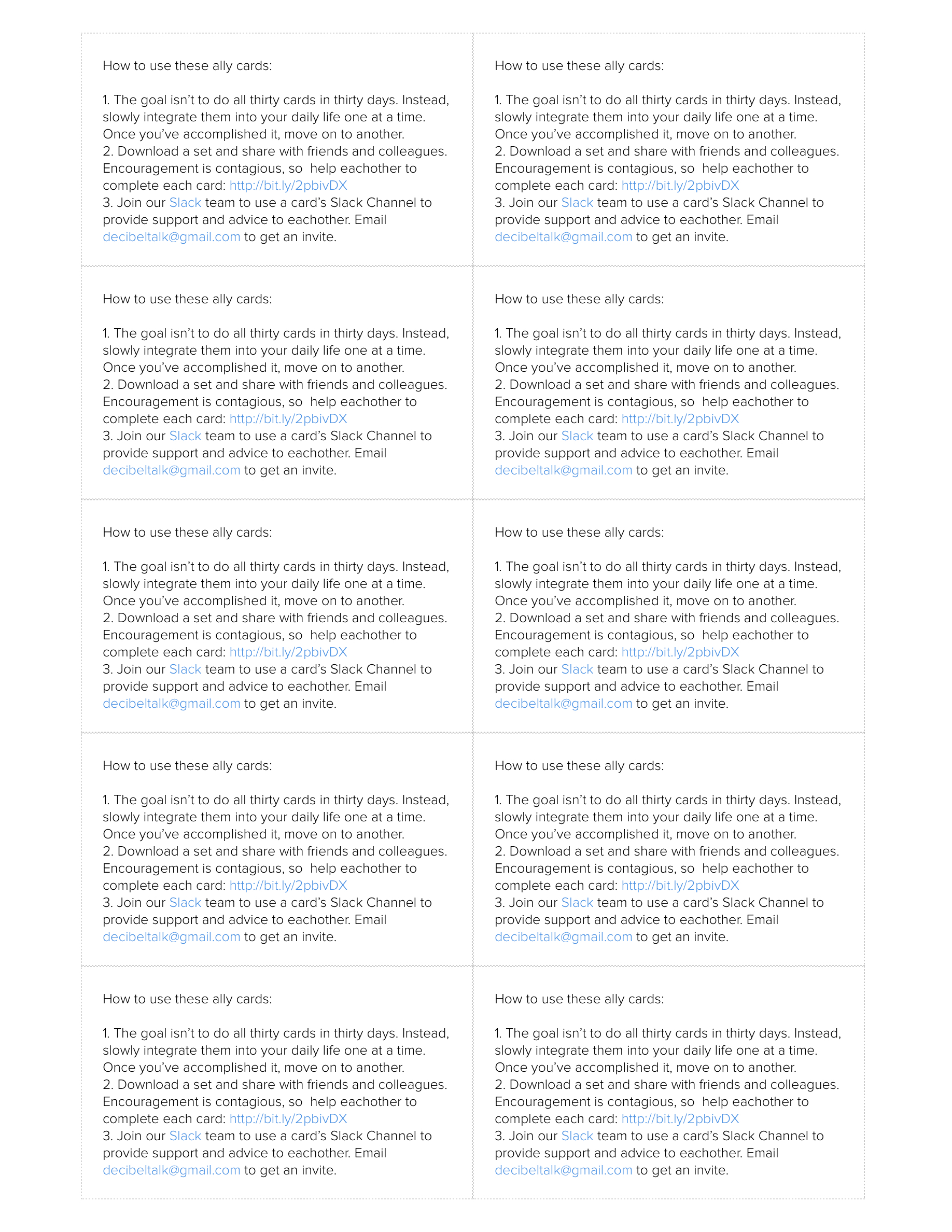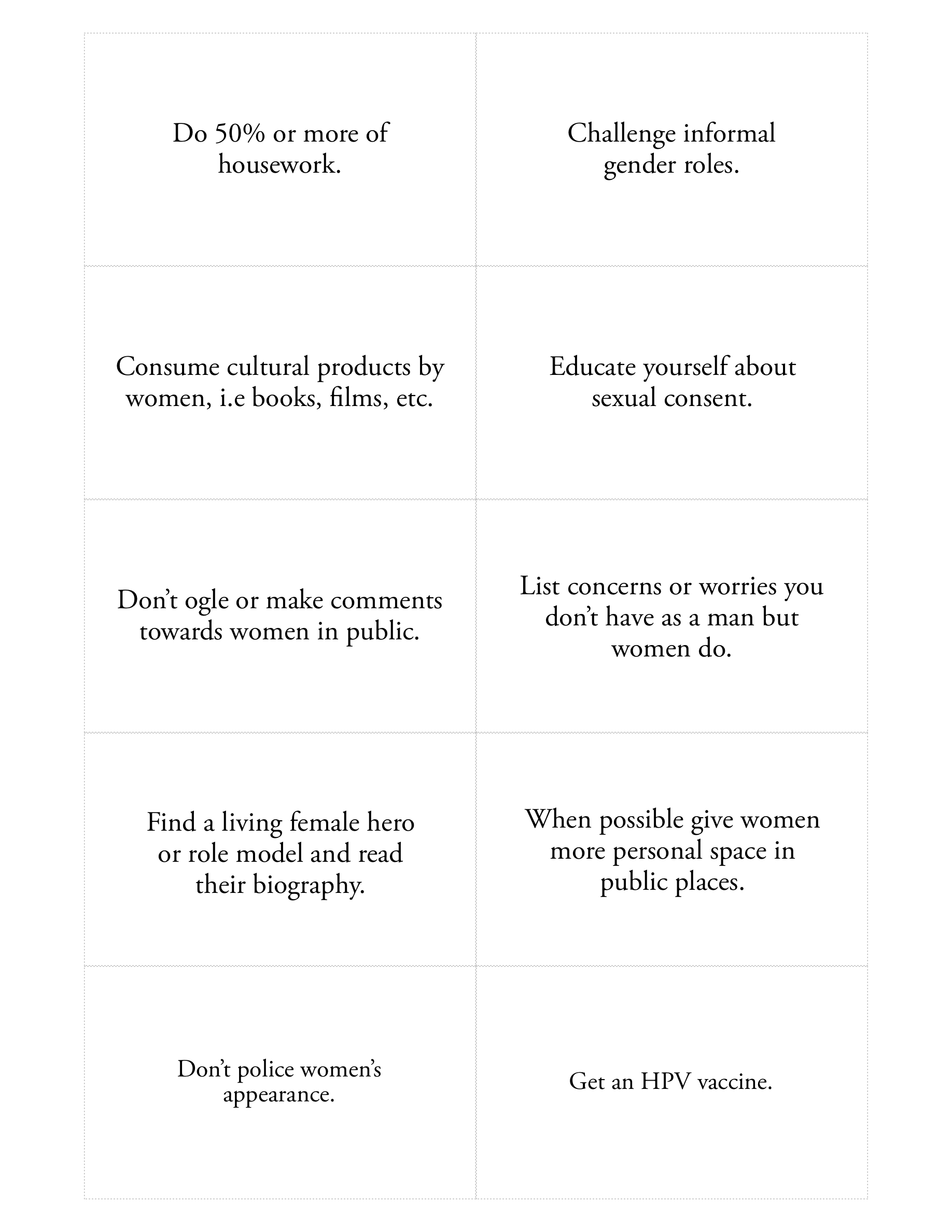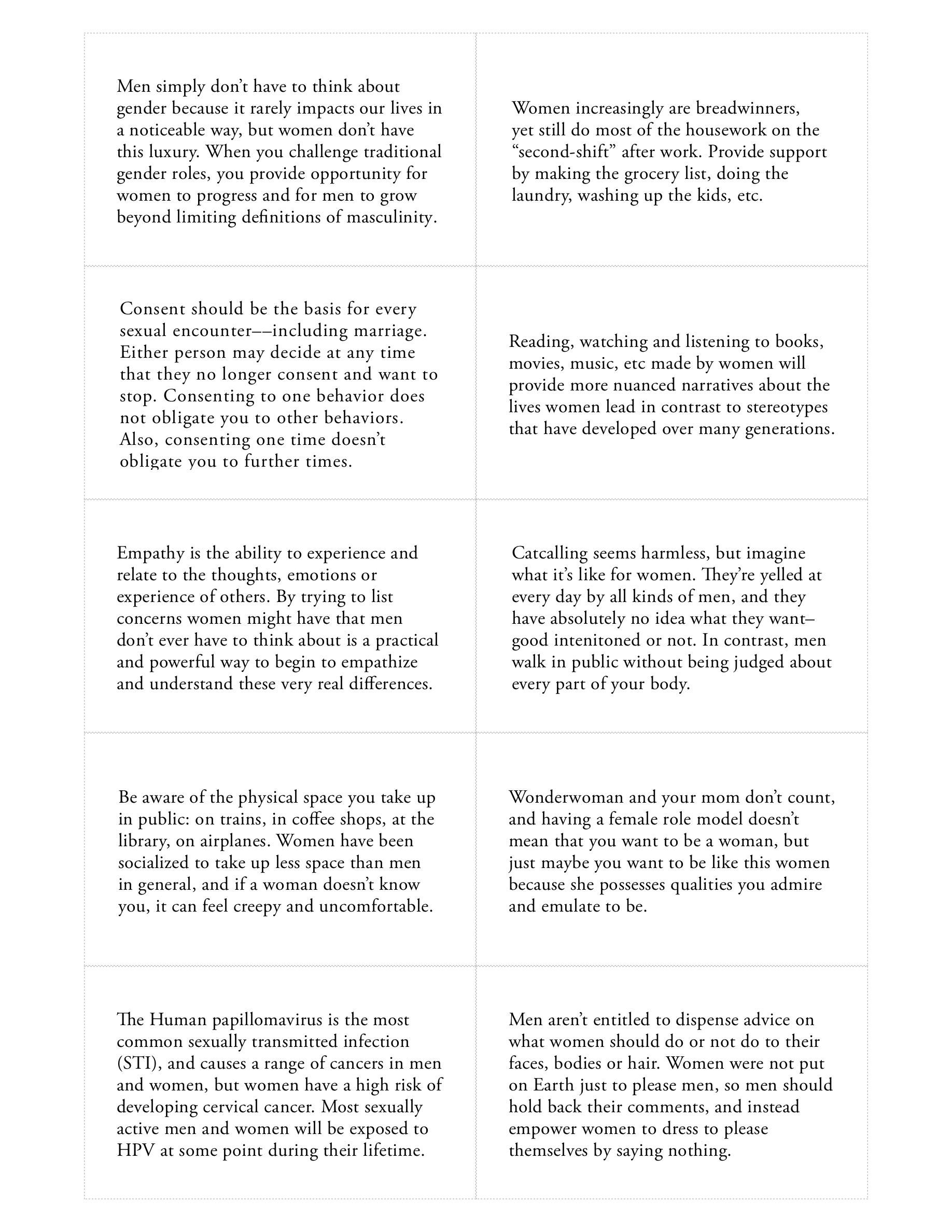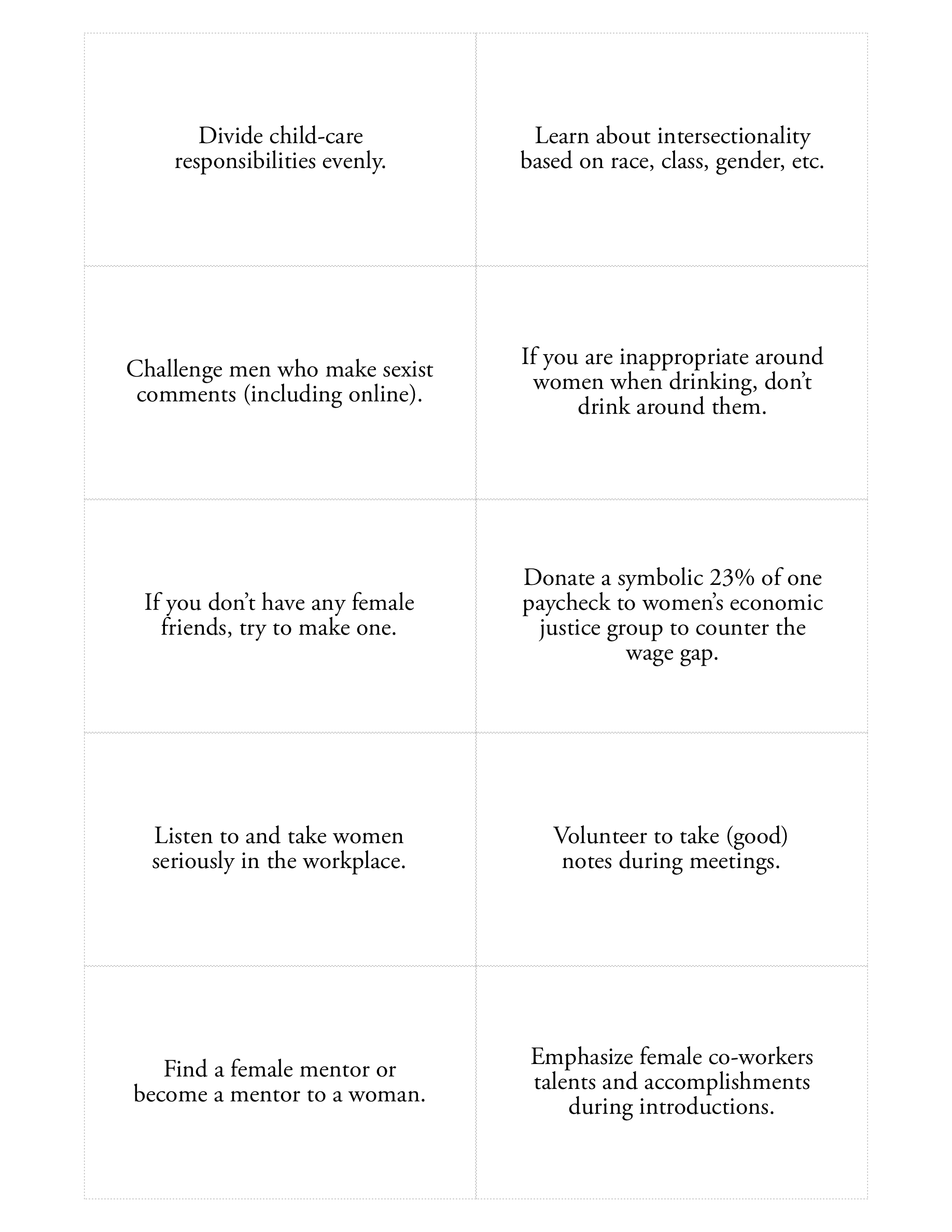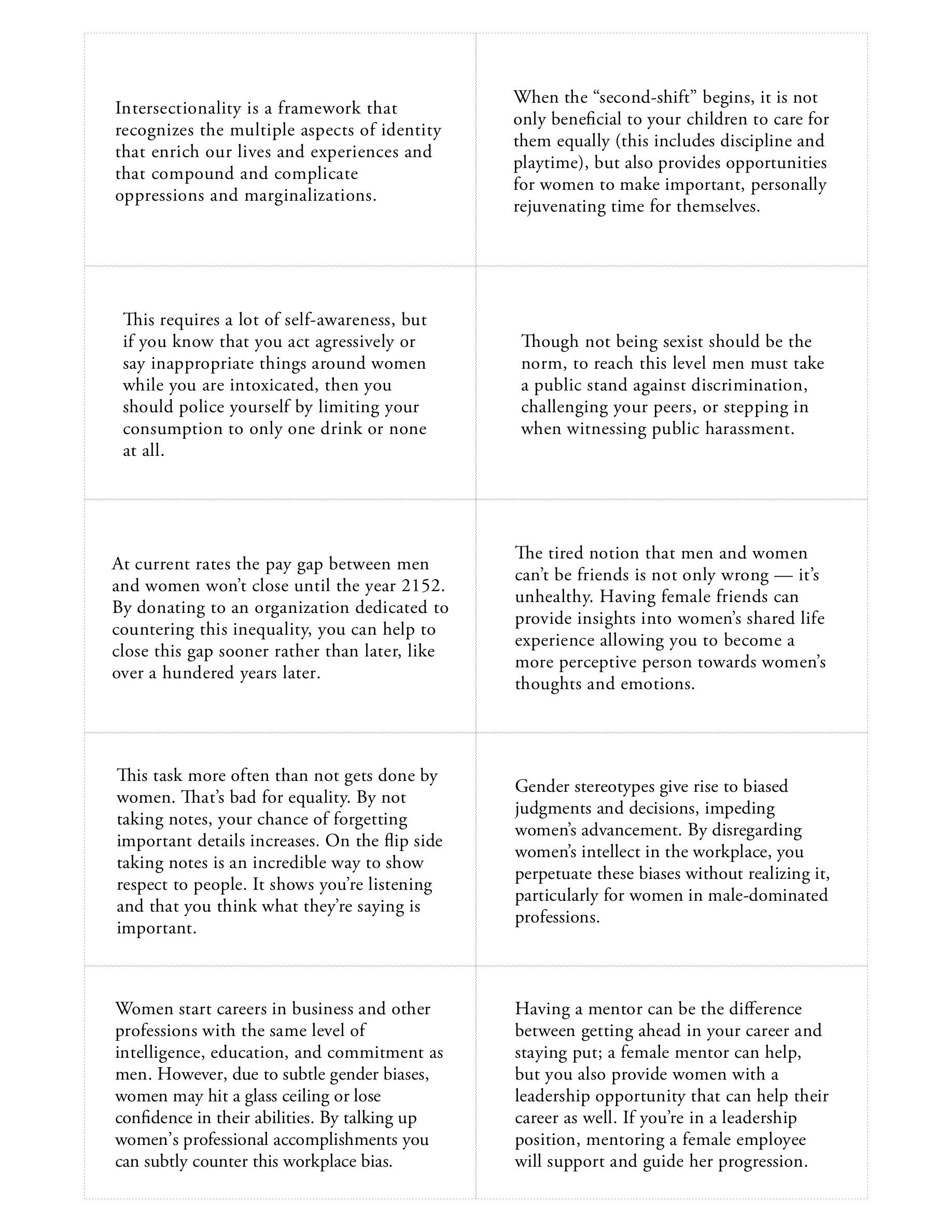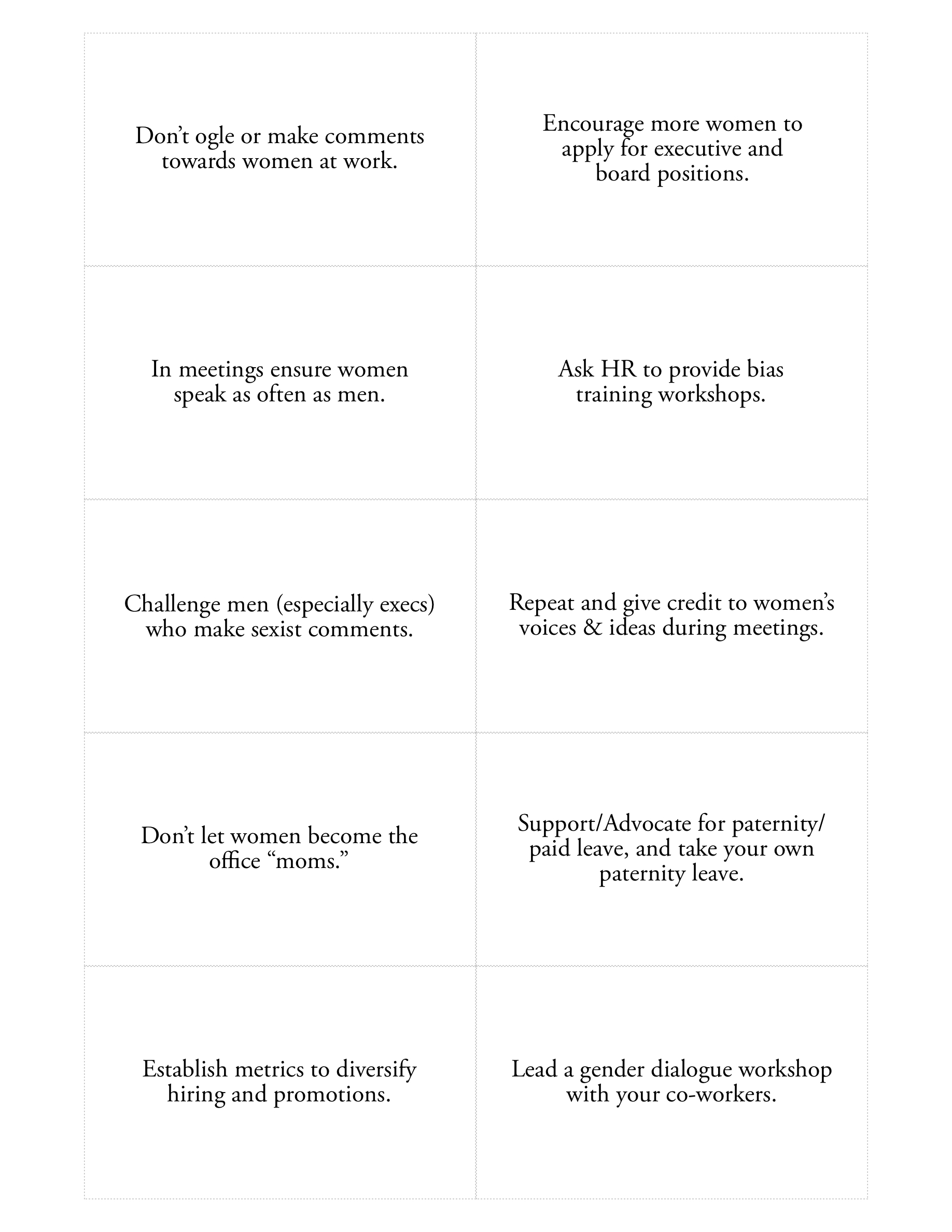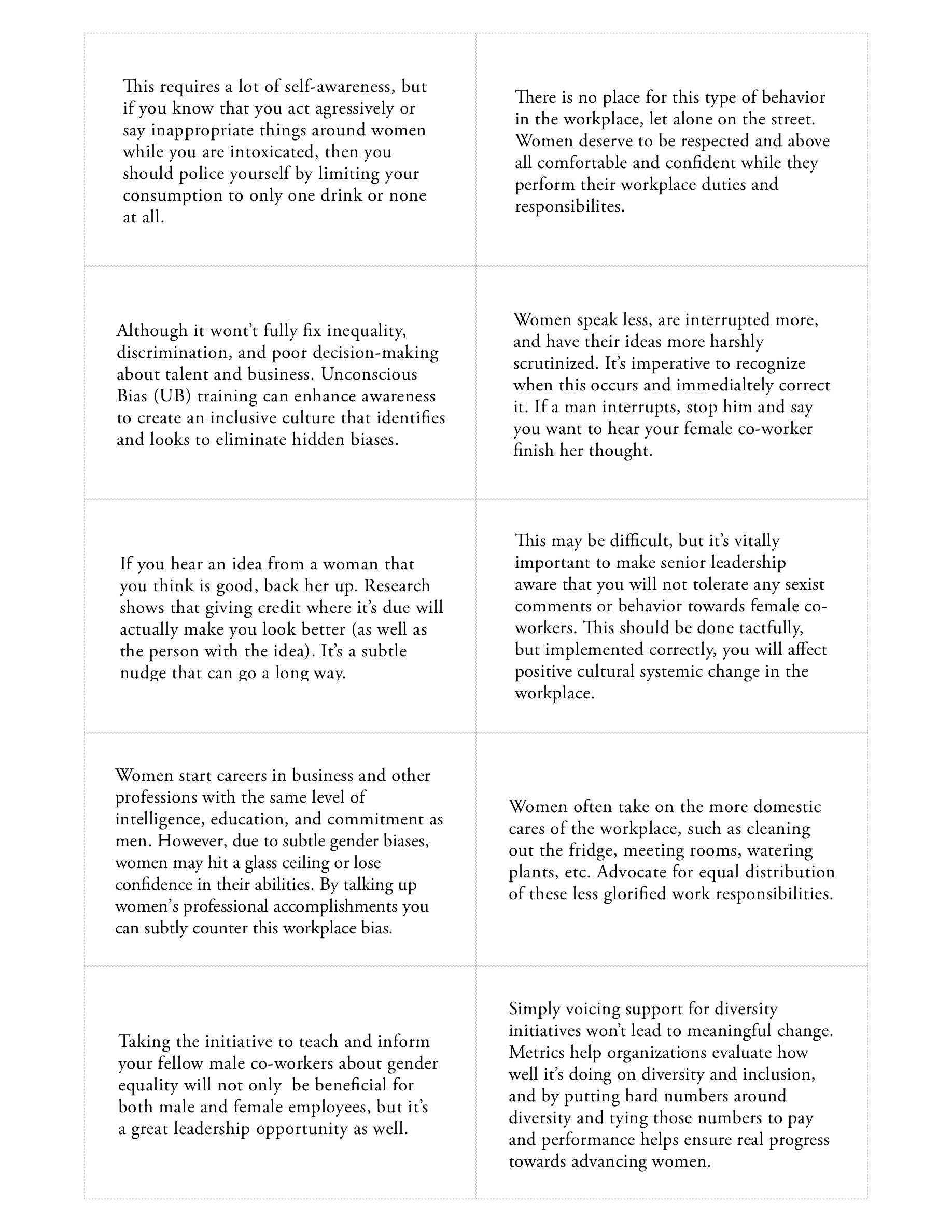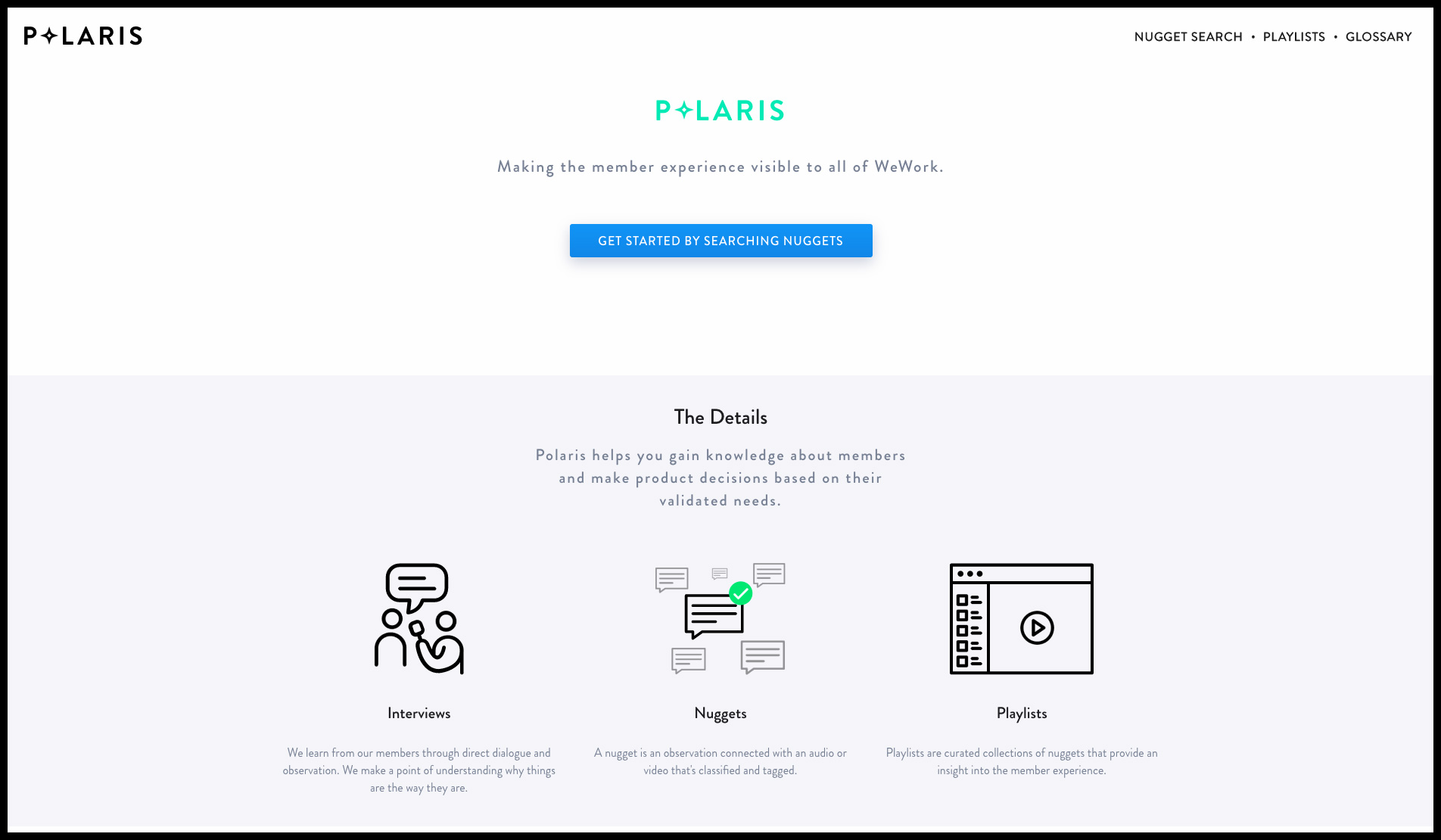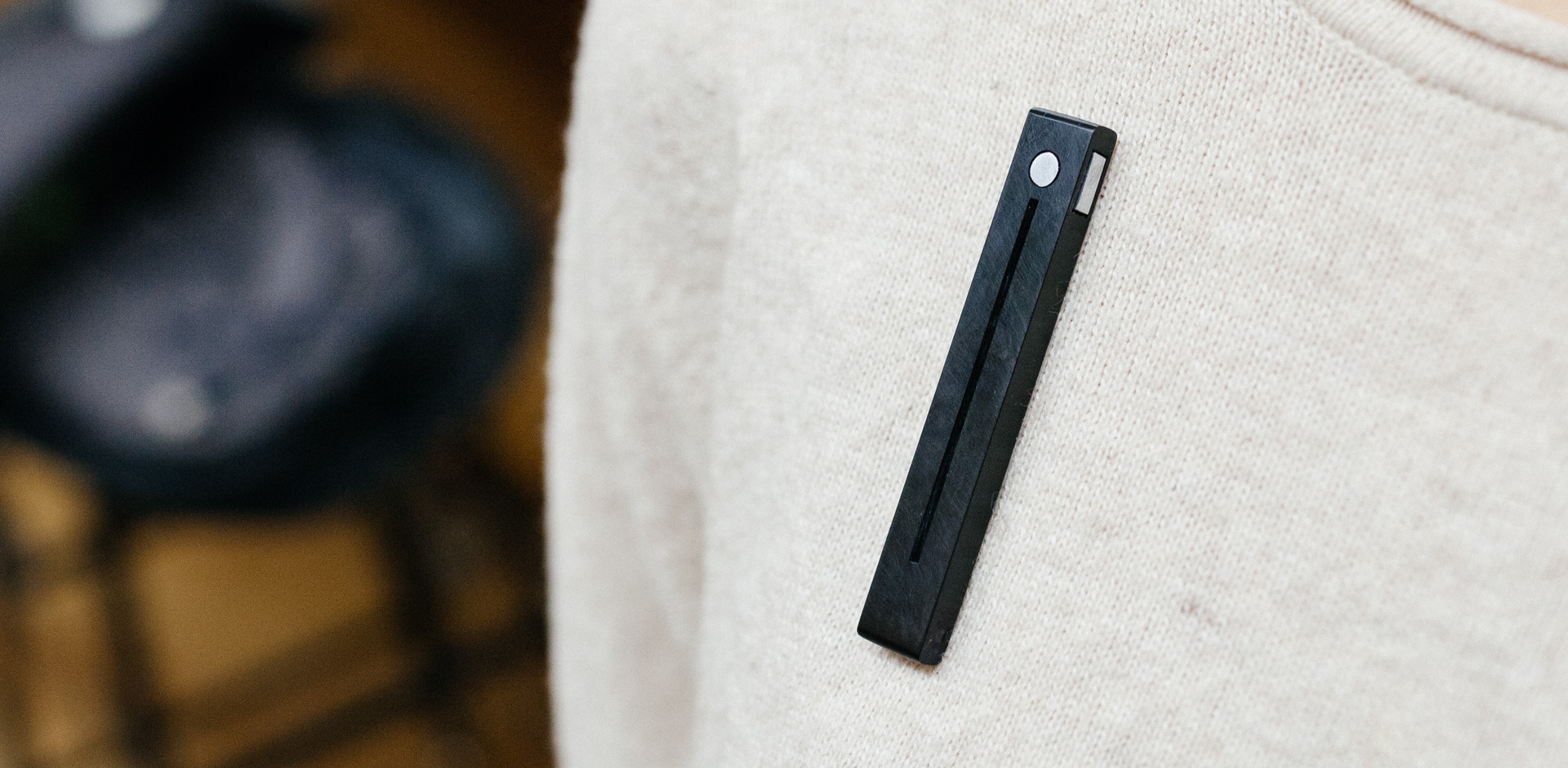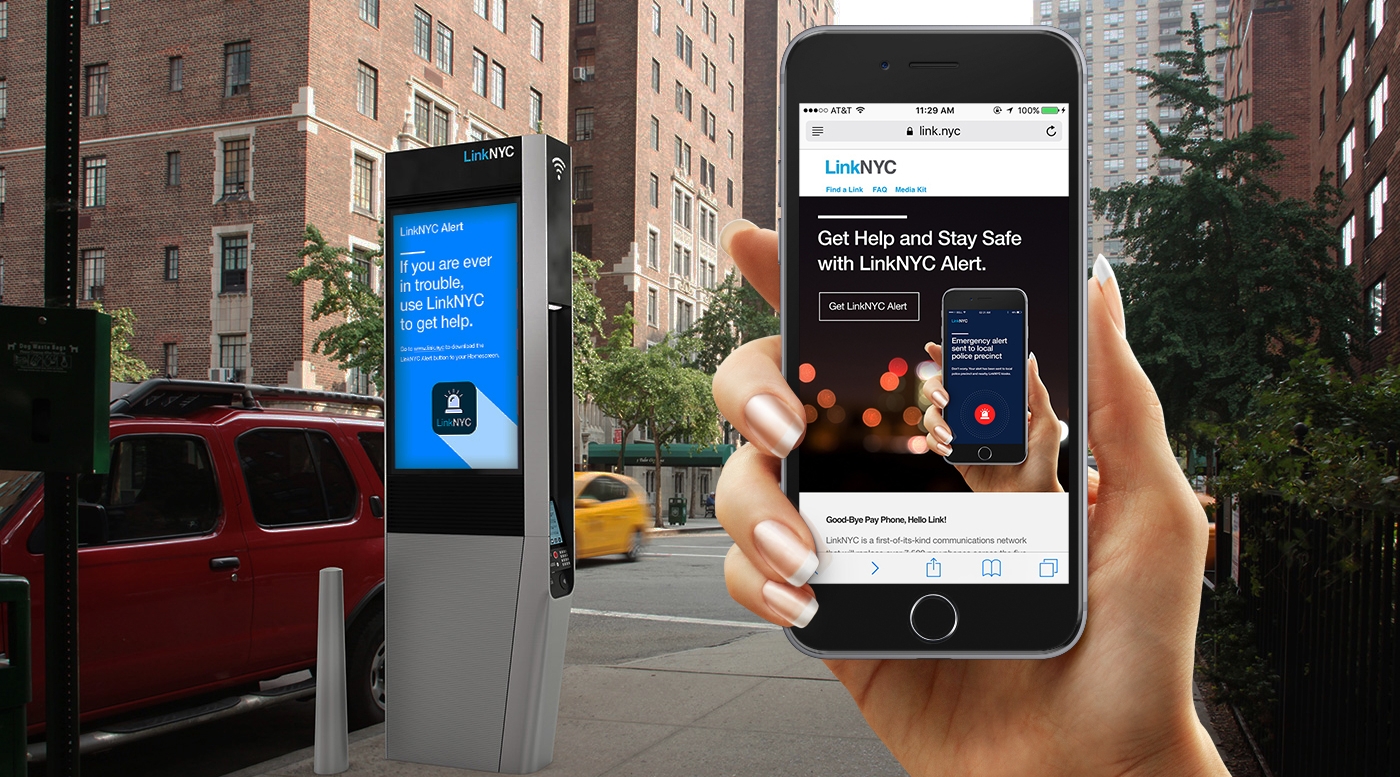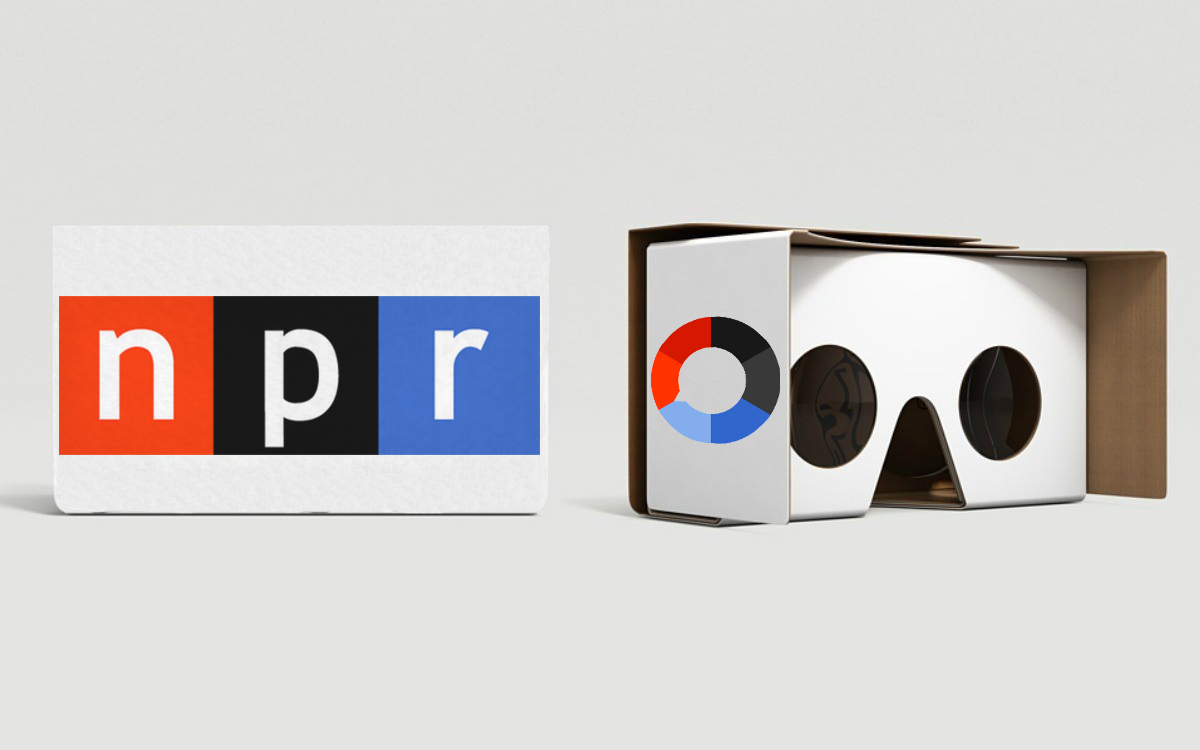How can we encourage action from men towards gender equality?
experience design: immersive audio exhibition + concrete actions + tools
Decibel is a traveling exhibition of immersive audio scenarios that tell real stories from women highlighting implicit gender bias, sexism, the wage gap, and other issues from a "fly-on-the-wall" perspective. After this experience, it provides tools for concrete actions for men to become better allies for women and gender equality.
Decibel compels participants to think critically and objectively about scenarios they may never have had to experience personally, and return to their reality with a new-found perspective and willingness to support progression and equality for all women.
the problem:
72% of US men believe that women have equal access to opportunity, while only 53% of women believe this to be true. [1] This gap is where implicit bias lives.
It’s also why women must be 2.5 times as good as men to be considered equally competent. [2]
To close this gap we need men to understand what is happening. We need men to listen to the stories women are telling us and we need men to talk about gender inequality with each other to grasp how they are a part of creating this gap and how they can take concrete actions to help close it.
the process:
I began by making an assumptions map of the private spaces where men feel comfortable talking about women, but not about women's issues, to try to understand why men put up this wall between them and the challenges women face on a daily basis.
Assumption Map
The next step was to better understand how strong implicit bias could actually be in our culture and society. I designed a simple research prototype with inspiration from the Harvard Implicit Bias Test. My test used images of men and women in three different professions: astronaut, news anchor and computer engineer. I gave each participant one minute per profession to answer a simple question with the images as seen below:

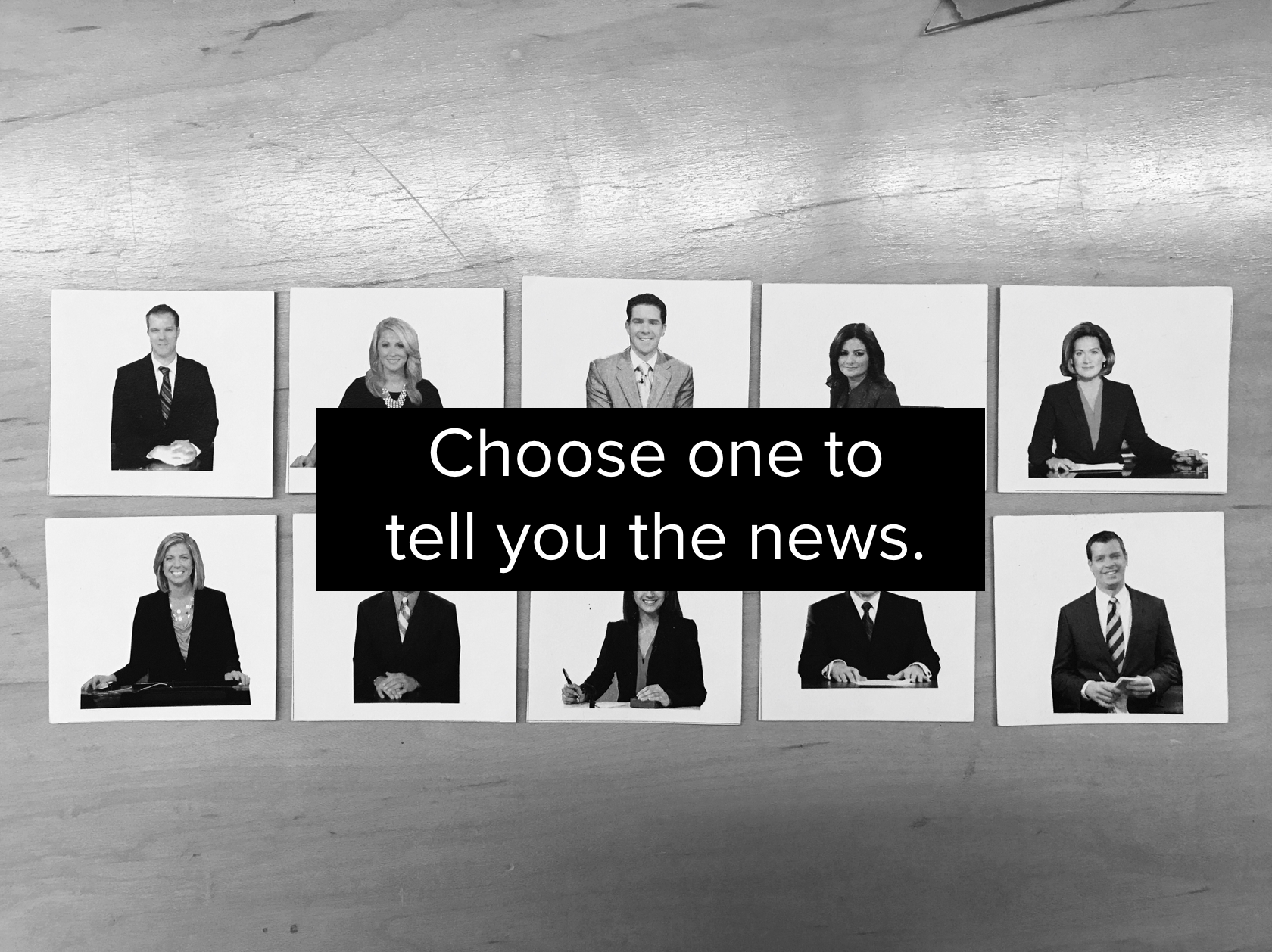

What I learned was not surprising. Men were overwhelmingly choosing astronaut teams of two men and one woman, coding teams of majority male, but trusted a woman to tell them the news. Where my research got interesting was when I also tested this on women, and they too were overwhelmingly choosing men to lead in the “hard skill” professions of space travel and computer programming over the perceived softer skill of reading the news.
I interpreted this finding to mean that gender bias is so strong in our culture and society, that it transcends gender, and it's why implicit bias is so difficult for us to see, for some to even believe it exists and that we all play a part in supporting it.
DIGITAL PROTOTYPES AREN’T ALWAYS
THE RIGHT PROTOTYPES
I made a digital version of my research prototype with Typeform, but after viewing the results tab, I realized that most people were using their smartphones to take it, and that made it difficult to evaluate all of the images at the same time, which resulted in participants not taking it serious and just picking at random, thus skewing the data.
prototyping:
I wanted to design an experience that allowed men to interact with the realities that women face in order to provide the opportunity for men to "hear" what those experiences sound and feel like for women. I also wanted men to hear how implicit bias manifests itself in our everyday language and how men can often miss these subtleties, but through this experience they could objectively discern what those subtleties are and then think critically about how they might be participating in implicit bias. I found inspiration after watching a documentary on Lin Manuel Miranda's process for creating "Hamilton."
The power of live performance can make a viewer experience real feelings that parallel those being performed by the actor. It can alter one’s relationship with the subject matter or history at hand, and it can even change one’s own thoughts by inducing self-reflection. If done right, it may even be able to produce behavioral change in its audience as they leave the theatre and return to the “real world.” The difference in my design would be that the viewer would not be a passive audience member, but would instead be inserted into the scenario to heighten the sense of realness that can be evoked during live performance.
I wanted the scenarios to have authenticity, and I wanted them to represent the real challenges, both overt and subtle, that women face. All of the scenarios that I wrote were either sourced from stories I read online or through conversations I had with women I knew who shared their stories with me. There are subtle differences to all of these stories from their source material, but they all stay true to the character and nature of them. I tried to cover a range of topics, while also being inclusive to how race, gender and sexual orientation can add other layers to the types of bias women face.
These stories were brought to life with a group of actors I hired to originally perform them live. But after a couple weeks, it became clear that live performance was proving to be difficult to accomplish because I needed to schedule rehearsals with the actors who all had different schedules due to the nature of being a freelance actor, plus whatever job they might have on the side to help live in this ridiculously expensive city. I started with a group of about nine actors, but by the time I was able to set up a recording session for the scenarios, I could only schedule four of them, so I ended up playing a few of the parts.
Below is one of the scenarios that depicts why it's difficult for some women getting dressed in the morning to work in a male dominated environment.
the design:
It starts by grabbing the attention of young men through a set of posters that will be put up around campuses prior to the exhibition opening with provocations that will bring women’s issues directly into their personal lives by making them curious how this affects women they care about deeply, and then by making them start to think about what their place in gender inequality might be.
The sound booth was constructed to provide an isolated environment separate from our subjective reality to allow a person to fully engage with the audio experience they will encounter while inside. It is constructed of lumber, inexpensive outdoor rugs, and black canvas fabric. The material is light, but when layered together forms a good sound barrier against noise happening outside the booth and also keeps the ambient light out which will enhance the audio experience as one’s hearing will be heightened.
Once inside the booth, a person wears noise canceling headphones from Bose, which really isolates the audio experience to allow a person to fully focus on the content they will be hearing. Combined with the booth, it creates an environment where a person can maximize their imagination while listening to the scenarios of experiences women face in their lives. The audio starts seamlessly when they sit down on the array of buttons inserted into the cushion they sit on.
After a user finishes their audio experience and exits the sound booth, I wanted to extend the interaction by providing a take away that provided practical tasks or challenges that men could begin to integrate into their lives to make small incremental changes that could eventually lead towards larger systemic change. I designed a pack of business size cards with thirty tasks or challenges that would sit on top of a persons desk. It is small enough to not take up significant space, but also as a stack it is easily discernible among other clutter. They have a minimalist appearance because I wanted a person to focus on the text and easily digest the task and explanation/example on the backside. They are broken up into tasks for a person’s personal and workplace life.
Below are pdf's which you can print out and share.
I also designed a mobile version of these cards that would give the user more control over which tasks they are trying to complete by turning cards on or off, and by selecting a timeframe to complete the card to put some internal pressure on themselves to complete it.
But what I believe really makes these digital cards powerful is that each card or groups of cards can be linked to a corresponding Slack Channel.
Here, men can discuss the topics of the cards while also providing support, advice and encouragement for one another. It’s also how they will become more comfortable and confident in discussing their place in the gender equality conversation.
And, a chrome plugin can provide a subtle reminder of which card they are actively trying to complete every time they open a new tab. But it can also give men some help upfront through the use of weblinks to better understand why there are also benefits for them to integrate these changes into their lives and to give them a head start on some of the research they might have to do.
Full Process Book pdf below:





















